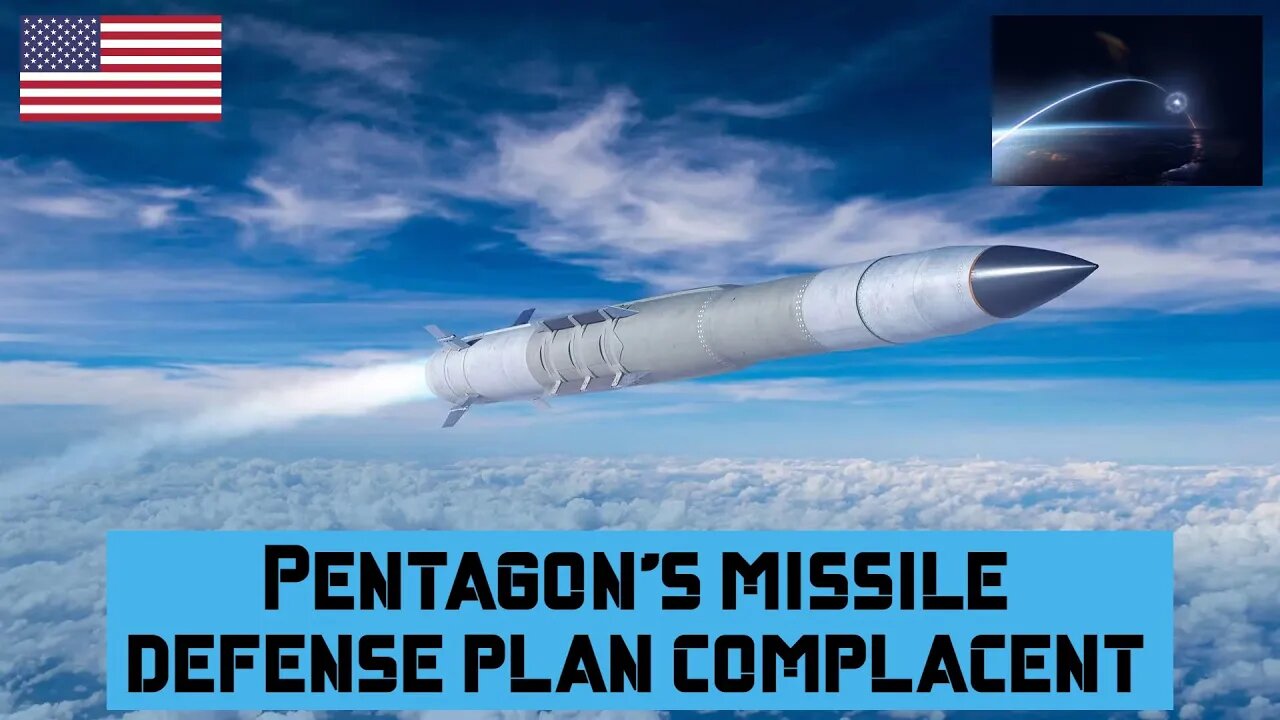Premium Only Content

Pentagon’s missile defense plan complacent
The unclassified version of the UNITED STATES Missile Defense Review, released by the Pentagon on Oct. 27, contains no major surprises when it comes to strategy, but missile defense experts say it lacks a clear execution plan. The new review takes up 17 pages in the 80-page unclassified version of the UNITED STATES National Defense Strategy, also released Oct. 27. The classified version is lengthier and more comprehensive, defense officials said in a briefing at the Pentagon. The National Defense Strategy, for the first time ever, includes the Nuclear Posture Review and the Missile Defense Review. In years past, the major guidance documents were unveiled separately. The Trump administration released the last Missile Defense Review in 2019 — a 108-page document that maintained a large amount of continuity with the MDR of 2010 but placed the missile defense enterprise in the context of great power competition against Russia and China for the first time. “The Missile Defense Review largely represents a continuation of current policy on missile defense and does little to clarify the administration’s strategy on how missile defense should be adjusted to meet growing threats,” said Patty-Jane Geller, a senior policy analyst at the Heritage Foundation think tank. “It is disappointing to see another missed opportunity to bring more coherence to our missile defense policy,” the missile defense and nuclear deterrence expert. “For example, the MDR commits to the priority of homeland missile defense and staying ahead of the North Korean threat. It also rightly stresses the importance of improving our ability to address advanced threats like hypersonic weapons,” she said. “Yet, it gives little information about an actionable plan to meet these growing challenges.” The review reaffirms that homeland missile defense is America’s top missile defense priority. The UNITED STATES will continue to modernize and expand the Ground-based Midcourse Defense, or GMD, system, which was built to protect the UNITED STATES homeland from intercontinental ballistic missiles from North Korea and Iran. The system consists of 44 interceptors buried in the ground, primarily at Fort Greely, Alaska, with a handful at Vandenberg Space Force Base, California, a network of space-based and terrestrial-based sensors, and an integrated command-and-control system. The review shows a commitment to continuing to develop the Next Generation Interceptor, or NGI, expected to be fielded around 2028, to augment and potentially replace current interceptors. The current plan is to acquire 20 of those interceptors, according to a Pentagon official at the briefing. The timeline and fielding plan is not laid out in the MDR. Geller noted that the MDR commits to improving homeland missile defense, but a recent Statement of Administration Policy on the Senate’s version of the fiscal 2023 defense policy bill objects to a provision that would require a funding plan to buy additional NGIs that would help outpace the North Korean threat. The brevity of the review “leaves several issues unmentioned,” Tom Karako, a missile defense analyst at the Center for Strategic and International Studies said. One of those issues is the absence of timelines and phases. “It is one thing to say the United States must defend Guam, that we must have hypersonic defense and that space sensors are critical. But there are no express milestones or dates to assess whether they will be available within the decade, let alone at the speed of relevance,” he said. Moreover, Geller noted while the MDR commits to hedging against advanced technologies under development by China and Russia, like hypersonic weapons, a Statement of Administration Policy also objects to additional funding for the Glide Phase Interceptor that the Missile Defense Agency is developing to destroy hypersonic missiles in flight.
====================================
We appreciate all of our viewers and supporters. Thank you.
====================================
Support us on Patreon: https://www.patreon.com/shieldwalldefense
====================================
Fair use is the right to use a copyrighted work under certain conditions without permission of the copyright owner. The doctrine helps prevent a rigid application of copyright law that would stifle the very creativity the law is designed to foster. It allows one to use and build upon prior works in a manner that does not unfairly deprive prior copyright owners of the right to control and benefit from their works. Together with other features of copyright law like the idea/expression dichotomy discussed above, fair use reconciles the copyright statute with the First Amendment.
====================================
-
 LIVE
LIVE
megimu32
59 minutes agoON THE SUBJECT: Travis Kelce in Ed Hardy? The Return of Bedazzled Fashion Nightmares
160 watching -
![[ Boom Squad Monday ] if it Explodes don't fix it!](https://1a-1791.com/video/fww1/33/s8/1/b/r/c/W/brcWy.0kob-small--Boom-Squad-Monday-if-it-Ex.jpg) LIVE
LIVE
CHiLi XDD
3 hours ago[ Boom Squad Monday ] if it Explodes don't fix it!
96 watching -
 LIVE
LIVE
We Like Shooting
13 hours agoDouble Tap 415 (Gun Podcast)
309 watching -
 LIVE
LIVE
EzekielMaxwellVT
1 hour agoVTuber/VRumbler -Elden Ring Nightreign - 3 guys die a lot
80 watching -
 1:55:20
1:55:20
Blabs Games
2 hours agoMy First Rumble Stream! Uno With Mally | Noob Plays
2.38K4 -
 27:16
27:16
Scary Mysteries
12 hours ago5 CHILLING 911 Calls That Ended in Absolute Horror
27710 -
 14:09
14:09
Tundra Tactical
3 hours ago $0.38 earnedWhat Your SBR Says About YOU!!!
4.24K1 -
 23:57
23:57
Solar Groove Muzic
5 hours ago $0.05 earnedSummer EDM | Afro House Music 2025!
3.36K1 -
 1:39:36
1:39:36
LIVE WITH CHRIS'WORLD
5 hours agoLIVE WITH CHRIS’WORLD - Did Trump Stop Nuclear War? HERE’S HOW IT WENT DOWN!
4.08K5 -
 47:41
47:41
Donald Trump Jr.
6 hours agoThe Trump Doctrine & American Strength, All the Latest Breaking News | TRIGGERED Ep.252
98.8K118